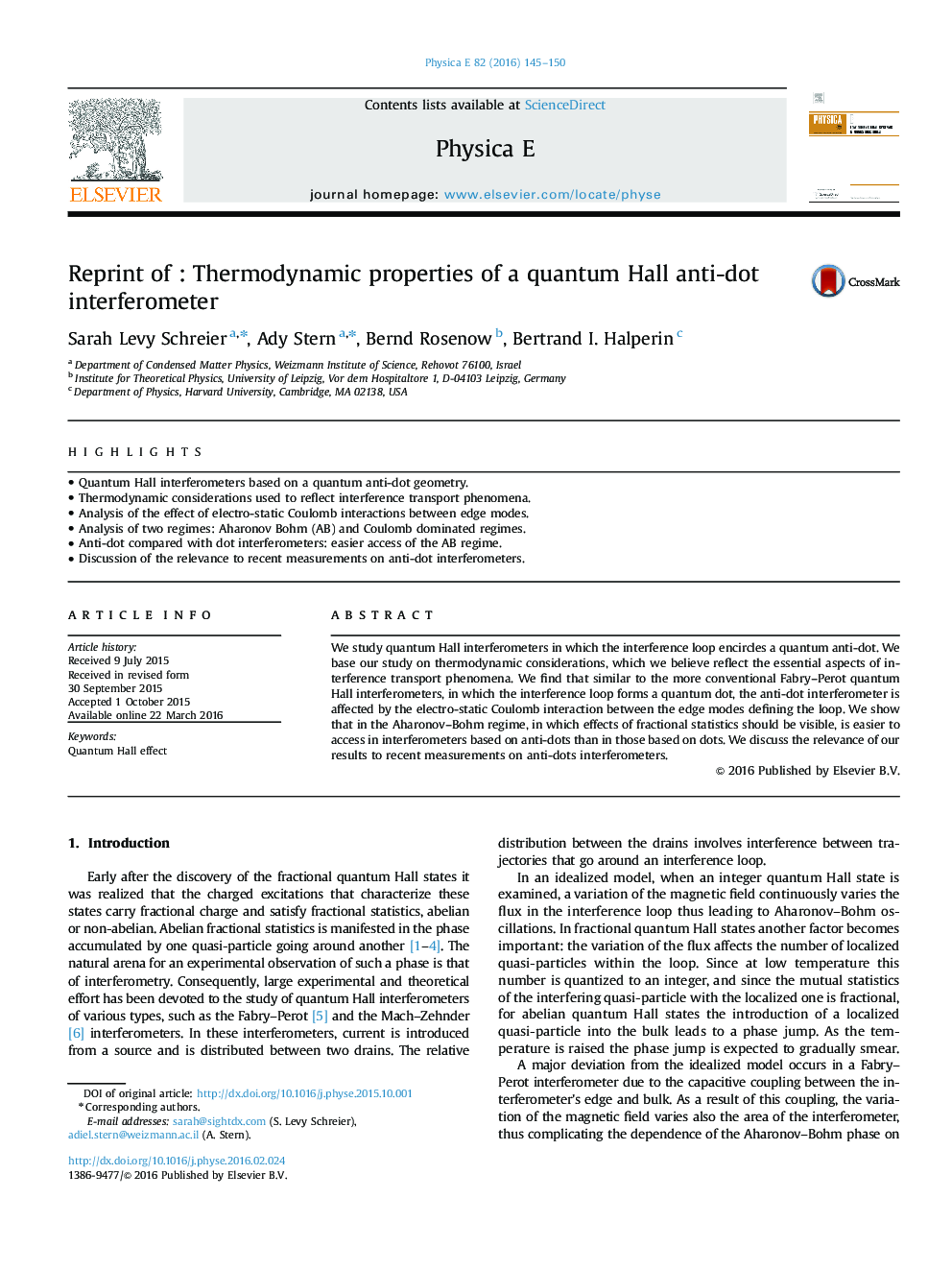| Article ID | Journal | Published Year | Pages | File Type |
|---|---|---|---|---|
| 1543591 | Physica E: Low-dimensional Systems and Nanostructures | 2016 | 6 Pages |
•Quantum Hall interferometers based on a quantum anti-dot geometry.•Thermodynamic considerations used to reflect interference transport phenomena.•Analysis of the effect of electro-static Coulomb interactions between edge modes.•Analysis of two regimes: Aharonov Bohm (AB) and Coulomb dominated regimes.•Anti-dot compared with dot interferometers: easier access of the AB regime.•Discussion of the relevance to recent measurements on anti-dot interferometers.
We study quantum Hall interferometers in which the interference loop encircles a quantum anti-dot. We base our study on thermodynamic considerations, which we believe reflect the essential aspects of interference transport phenomena. We find that similar to the more conventional Fabry–Perot quantum Hall interferometers, in which the interference loop forms a quantum dot, the anti-dot interferometer is affected by the electro-static Coulomb interaction between the edge modes defining the loop. We show that in the Aharonov–Bohm regime, in which effects of fractional statistics should be visible, is easier to access in interferometers based on anti-dots than in those based on dots. We discuss the relevance of our results to recent measurements on anti-dots interferometers.
